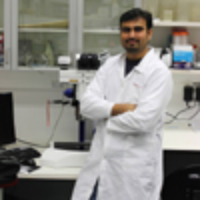Edible Mushrooms and Their Holistic Approach on Health
Published on: 14th August, 2023
During this period of time, mushroom experience changes in functional aspects and consumption areas. Due to its magnificent role in promoting health, it was considered one of the most healthy sources of food. Agaricus spp., Marcrolepoita spp., Auricularia spp, Armillaria spp, Pholoita, Hericium, Grifola spp, Flammulina, and Hypsizygus spp. are some most commonly consumed mushrooms in the world. They provide inexpensive means of nutritious and tasty food worldwide. However, ancient people are also very much aware of their holistic function towards health and that was why they used mushrooms for medicinal purposes in the past onwards. Mushroom plays an important role in the treatment of some lethal diseases like cancer, inflammation, autoimmune disorders, allergy, hypertension, arthritis, hyperglycemia, atherosclerosis, and many more. Meanwhile, researchers still focus on other functions of mushrooms in health science and also explore their anticancerous activity. However, many findings are left to be found in the future. This review paper throws light on the various important mushrooms and their functions related to human health, and also ongoing research towards treating some critical diseases.
Prospective Coronavirus Liver Effects: Available Knowledge
Published on: 18th August, 2023
The global pandemic COVID-19, caused by SARS-CoV-2, affected millions of people. COVID-19 is known for its respiratory symptoms, but new research reveals it may also affect other organ systems, including the liver. This abstract reviews COVID-19 and liver function. The virus enters host cells through liver-expressed angiotensin-converting enzyme 2 (ACE2) receptors. Thus, viral infection and replication may target the liver. Virus-induced inflammation and cytokine production may also harm the liver. ALT and AST elevations are the most prevalent liver abnormalities in COVID-19 patients. Liver function test abnormalities frequently indicate serious illness and poor clinical outcomes. COVID-19 may worsen pre-existing liver diseases such as NAFLD and chronic viral hepatitis. Drug-induced liver damage (DILI) from COVID-19 therapies including antivirals and corticosteroids complicates liver complications care. Recent investigations have also shown that COVID-19 may cause long-term liver damage. In conclusion, COVID-19 infection, immune-mediated damage, and treatment problems may severely compromise liver function. Optimizing patient treatment and discovering targeted medicines requires understanding COVID-19's liver role. To reduce the effects of COVID-19 on liver function, further study is required to understand the mechanisms and long-term effects.
Pattern of Clinical Presentation and Management of Inflammatory Bowel Disease
Published on: 12th September, 2023
Background: Inflammatory bowel disease (IBD) is characterized by non-specific chronic relapsing inflammation of the gastrointestinal tract and extra-intestinal manifestations. It includes Crohn’s disease (CD) ulcerative colitis (UC) and unclassified colitis.Objective: To assess the clinical presentations and management of inflammatory bowel disease in Sudanese patients.Methodology: Prospective, cross-section hospital-based study was conducted at Soba University Hospital (SUH) and Ibn Sina Hospital, in a period from December 2016 to March 2017. Data was entered and analyzed with SPSS, an interview questionnaire containing demographic, clinical, type of IBD, treatment, and complications.Results: A total of 64 IBD patients were included, 50% were diagnosed with UC, 28.1% with CD and 21.9% unclassified type. The most frequent age in UC patients was 41 – 50 years 34.4%, in CD was 31- 40 years 38.9% and for the unclassified type was 51 – 70 years 57.2%. The female was higher in CD while males were higher in Ulcerative colitis disease, symptoms were diarrhea, rectal bleeding, abdominal pain, rectal pain, tenesmus and fatigue. Study participants received 5 amino salicylic acid, and steroids, especially in the oral formulation. Minimal usage of topical forms, azathioprine, and biological agents. Conclusion: The study concluded UC is more common than CD. This should be taken into account as an important update for internal medicine professionals to adjust their expectations and lines of diagnosis, and management. The emergence of the unclassified type in Sudan requires good communication between the pathologists and the physicians and MDT meetings in every patient with suspicion of IBD.
Laser Doppler Flowmeter as a Periodontal Evaluation Method: A Clinical Pilot Study
Published on: 9th October, 2023
Background and objectives: Periodontal disease, as an inflammatory pathology, induces hemodynamic changes that can be evaluated by different unbiased methods such as laser Doppler flowmetry. This clinical investigation assesses laser Doppler as a non-invasive procedure to monitor gingival vascularization and its potential relationship with the response to treatment of periodontal disease.Materials & methods: 45 sites of white Spanish patients with active periodontitis undertake a complete periodontal analysis. This included periodontal pathogens identification along with the monitoring of the gingival margin microvascularization using a Doppler laser at the points exhibiting the most periodontal damage. All assessments were performed before and after periodontal combined treatment PCT (scaling, root planing, and antibiotic therapy prescription) (n = 45 sites).Results: Parameters of periodontal disease showed a positive correlation with pathogen levels. Blood flow readings decreased significantly after PCT (p < 0,05), although this parameter was not statistically correlated with periodontal nor microbial assessments in a significant range.Conclusion: Laser Doppler is a complementary method of monitoring periodontal inflammation to traditional techniques of clinical periodontal evaluation. Further studies are necessary to determine its usefulness as a predictive method of periodontal disease evolution.
An Interesting Autopsy Case Report of Acute Respiratory Failure
Published on: 11th October, 2023
Vasculitis is a group of rare but potentially serious disorders characterized by inflammation of blood vessels. This condition can affect blood vessels of all sizes, ranging from small capillaries to larger arteries.
The Importance of the Concept of Acute Pneumonia for Choosing the Principles of its Treatment and Results
Published on: 30th January, 2024
Over the past many decades, scientific research and practical efforts in the field of acute nonspecific inflammation of the lung tissue have been aimed at early detection of the pathogen and its suppression.
A Water-soluble Form of Dihydroquercetin Reduces LPS-induced Astrogliosis, Vascular Remodeling, and mRNA VEGF-A Levels in the Substantia Nigra of Aged Rats
Published on: 16th February, 2024
Background: The age-dependent sporadic form of PD is characterized by the degeneration of dopaminergic (DA) neurons in the Substantia Nigra (SN), gliosis, and vascular changes. Vascular changes may contribute to the onset of the disease and exacerbate the neurodegenerative process, as some vascular changes occur before the onset of neuronal loss. To demonstrate the anti-neuroinflammatory efficacy of a new compound, a water-soluble form of dihydroquercetin (DHQ-WF), we studied the structural changes of microcirculatory vasculature, astroglial GFAP, and vascular endothelial growth factor –A (VEGF-A) mRNA expression in the SN of young and old rats after unilateral nigral treatment by lipopolysaccharide (LPS) and oral administration of DHQ-WF.Materials and methods: The experiments were performed on 18 young (8 weeks - 10 weeks old; 250 g - 320 g) and 18 old (18 months - 19 months old; 390 g - 450 g) male Vistar rats. Young and adult rats from the experimental groups were stereotactically injected with 2 μL LPS solution (LPS from Escherichia coli; 0,01 μL/mL) into one side of the SN. Control young and old rats were similarly injected with 2 μL sterile saline. Half of the animals in both the control and experimental groups (6 animals in each group) received a 2 ml solution containing DHQ-WF at a concentration of 3 mg/ml orally every day. After 8 weeks, brains were harvested and serial cryostat sections were prepared for histochemical (FITC-labeled tomato lectin), immunohistochemical (anti-GFAP Antibody, Cy3 Conjugate) staining, and real-time PCR (mRNA VEGF-A).Results: Eight weeks after LPS injection into the SN, a significant excess of areas occupied by cell bodies and processes of astroglial cells, the density of microcirculatory vessels, and mRNA VEGF-A expression was observed in old animals compared to control old animals and young LPS-treated rats. Oral administration of DHQ-WF to LPS-treated rats resulted in a significant reduction of these parameters in old animals.Conclusion: Injection of LPS into rat SN induces neuroinflammation and vascular angiogenesis, maximally expressed in old animals. Administration of DHQ-WF for 8 weeks significantly reduces these LPS-induced changes. DHQ-WF may be an effective treatment for reducing the effects of neuroinflammation in the aging brain.
Why is Pain not Characteristic of Inflammation of the Lung Tissue?
Published on: 7th March, 2024
The article presents materials that make it possible to understand the reason for the absence of one of the classic signs of inflammatory processes in patients with acute pneumonia. The peculiarities of the functional significance of the lungs for the body are the reason that in the case of inflammation in the tissues of the organ, nature has provided for the presence of a more important adaptive mechanism instead of pain as a signal sign. Understanding the causes of the absence of pain in pneumonia in the initial period, which is most responsible for timely and effective care for these patients, allows us to look at the pathogenesis of the disease from a new point of view, which is of fundamental importance for the correction and selection of pathogenetic means of care.
Use of Lactobacillus reuteri DSM 17938 in the treatment of Stage II-III Periodontitis: Longitudinal Study of 36 Patients
Published on: 11th March, 2024
Periodontal diseases are a consequence of the host’s inflammatory and immune mechanisms against dysbiotic bacterial plaque. Given the role of probiotics in biofilm control and modulation of dysbiosis, this study assessed the efficacy of a specific strain of Lactobacillus Reuteri, DSM 17938, in the treatment of stage II and III periodontitis. 36 patients were randomly allocated into two groups: group A, the treated group; and Group B, the control group. The treated group and the control group both underwent initial periodontal debridement. Patients received medications after undergoing periodontal debridement. Clinical parameters were assessed at baseline and at 21 days. All parameters evaluated, Probing Depth (PD), Full Mouth Bleeding score (FMBS), and Full Mouth Plaque Score (FMPS) showed a reduction over time in both groups. The treated group showed a better reduction (p = 0.05) for PD. As far as the depth of probing is concerned, the decrease observed between the control group and the group treated with probiotics is such as to be considered statistically significant and since the average of the values for the treated group is higher than that of the control group, the use of probiotics has an efficacy of medium statistical importance in the treatment of periodontal disease.
Effect of TAK242 on MCP-1 and TGF-β in COPD Rats
Published on: 13th March, 2024
Objective: To investigate the mechanism of MCP-1 and TGF-β regulation by TAK242 in COPD rats. Methods: Thirty-six SD rats were randomly divided into normal, COPD control, and TAK242 groups. The normal group was freely fed, and the other groups used the method of fumigation plus lipopolysaccharide tracheal drip to establish an experimental animal model of COPD. After successful modeling, each experimental group received 0.9% NaCl solution and corresponding drugs by intraperitoneal injection for 7 d. After drug administration, lung function was examined; pathological changes in lung tissue were observed by light microscopy with hematoxylin-eosin staining; mRNA expression of MCP-1 and TGF-β was detected by q-PCR; and protein expression of MCP-1 and TGF-β in lung tissue was detected by Western blot and IHC, TGF-β protein expression in rat lung tissue. Results: Compared with the normal group, rats in the COPD control group showed signs and symptoms of COPD, decreased lung function, and increased expression of MCP-1 and TGF-β. The TAK242 group showed decreased expression of MCP-1 and TGF-β compared to the COPD control group. Conclusion: MCP-1, and TGF-β played a crucial role in the early stage of COPD fibrosis. TAK242 could ameliorate airway inflammation and inhibit the progression of COPD lung fibrosis in pre-existing rats in COPD model rats.
Evaluation of the Anti-inflammatory Activity of Equisetum arvense and Baccharis trimera Fractions
Published on: 19th March, 2024
Inflammation is a natural response of the body to defend itself against potential threats and can be reduced through physical activity, proper nutrition, and the use of herbal medicines, which are medicinal plants. In the study, we aim to examine the anti-inflammatory effects of the volatile and ethanolic fractions of two commonly used medicinal plants, Equisetum arvense, and Baccharis trimera. The essential oils were obtained by hydrodistillation of the fresh leaves of the plants, while the ethanolic extracts were obtained using classical methodologies. All fractions were tested for anti-inflammatory activity, evaluating their ability to stabilize the red blood cell membrane and inhibit the spreading, and phagocytosis by macrophages, at concentrations varying from 200 to 600 µg mL-1. The results of the experiments suggest that the ethanolic fraction of B. trimera shows promising results compared to the positive controls. Our investigations thus contribute to the specialized literature on the use of herbal medicines around nutrition, providing guidance for future studies on these fractions.
Cardioprotective Potentials of Anacardium occidentale Nuts Methanolic Extract in Diabetes-Induced Cardiac Dysfunction in Rats
Published on: 15th May, 2024
Background: The unwanted adverse toxicity displayed by synthetic antidiabetic medicine leads to the search for effective natural medicine to combat diabetes complications. This study investigated the cardioprotective of Anacardium occidentale nuts methanolic in high-fat diet (HFD)/streptozotocin (STZ)-induced diabetic rats.Materials and methods: Forty male adult Wistar were used and fed with HFD for 6 weeks before diabetes induction. The rats were grouped into 5 groups, 8 rats/group. Group I: normal control; Group II: diabetic control; Group III & IV: diabetic rats + 100 mg/kgb.wt & 200 mg/kgb.wt Anacardium occidentale nuts methanolic extract; Group V: diabetic rats + 200 mg/kgb.wt metformin. The rats were sacrificed on the experiment’s last day, blood samples were collected and the hearts were isolated for biochemical parameters estimation.Results: Food intake, water intake, plasmas insulin, Fasting Blood Glucose (FBG), glycosylated hemoglobin (HbA1c), cardiac enzymes, lipid profile, inflammatory cytokines, malondialdehyde, fibrotic marker, caspase-3 in cardiac of diabetic rats were elevated (p < 0.05) significantly. Body weight, cardiac antioxidant, and anti-apoptotic marker levels diminished (p < 0.05) significantly in diabetic rats. 100 mg/kgb.wt & 200 mg/kgb.wt of Anacardium occidentale nuts methanolic extract administration significantly suppressed the plasma insulin, FBG, HbA1c, cardiac lipid profile, cardiac enzymes biomarker, cardiac inflammatory cytokines, cardiac malondialdehyde, cardiac fibrotic marker, cardiac caspase-3, food intake & water intake and increased the body weight, cardiac antioxidant & cardiac anti-apoptotic marker in the diabetic rats.Conclusion: Anacardium occidentale nuts attenuate cardiac injury in diabetes. It could be a natural medicine to manage diabetes-cardiovascular complications.
Microbiome-Gut-Brain Axis: AI Insights
Published on: 25th June, 2024
Microbiome-gut-brain axis represents a complex, bidirectional communication network connecting the gastrointestinal tract and its microbial populations with the central nervous system (CNS). This complex system is important for maintaining physiological homeostasis and has significant implications for mental health. The human gut has trillions of microorganisms, collectively termed gut microbiota, which play important roles in digestion, immune function, and production of various metabolites. Some current research shows that these microorganisms strongly influence the brain function and behaviour of individuals, forming the basis of the microbiome-gut-brain axis. The communication between gut microbiota and the brain occurs via multiple pathways: neural pathway (e.g., vagus nerve), endocrine pathway (e.g., hormone production), immune pathway (e.g., inflammation modulation), and metabolic pathway (e.g., production of short-chain fatty acids). Dysbiosis, or imbalance of gut microbiota, has been linked to mental health disorders such as anxiety, depression, multiple sclerosis, autism spectrum disorders, etc, offering new perspectives on their etiology and potential therapeutic interventions. Artificial Intelligence (AI) has emerged as a powerful tool in interpreting the complexities of the microbiome-gut-brain axis. AI techniques, such as machine learning and deep learning, enable the integration and analysis of large, multifaceted datasets, uncovering patterns and correlations that can be avoided by traditional methods. These techniques enable predictive modeling, biomarker discovery, and understanding of underlying biological mechanisms, enhancing research efficiency and covering ways for personalized therapeutic approaches. The application of AI in microbiome research has provided valuable insights into mental health conditions. AI models have identified specific gut bacteria linked to disease, offered predictive models, and discovered distinct microbiome signatures associated with specific diseases. Integrating AI with microbiome research holds promise for revolutionizing mental health care, offering new diagnostic tools and targeted therapies. Challenges remain, but the potential benefits of AI-driven insights into microbiome-gut-brain interactions are immense and offer hope for innovative treatments and preventative measures to improve mental health outcomes.
Enhancing Physiotherapy Outcomes with Photobiomodulation: A Comprehensive Review
Published on: 23rd July, 2024
Physiotherapy treatments employ complex approaches tailored to the patient’s diagnosis. Exercise is the primary strategy to enhance rehabilitation processes for most individuals. However, electrophysical agents, such as Photobiomodulation (PBM), that utilize specific wavelengths of light to penetrate tissues and stimulate cellular activity, can modulate various biological processes and may improve physiotherapy outcomes. This non-invasive treatment can reduce pain and inflammation, promote tissue repair, and accelerate tissue healing. Currently, PBM has numerous applications, including pain and inflammation treatment, wound healing (such as diabetic foot ulcers, pressure ulcers, post-surgery wounds, and skin grafts in burn injuries), and the management of musculoskeletal disorders (such as arthritis, tendinopathies, muscle injuries, and spinal disorders). It is also utilized to improve muscle performance and recovery in rehabilitation and sports. Additionally, transcranial PBM has shown promise in enhancing neurorehabilitative processes by facilitating the recovery of cognitive and motor functions in various types of lesions. The safety and efficacy of this treatment allow it to be incorporated alongside regular exercises and manual therapies as an adjunctive treatment, potentially enhancing outcomes in different areas of rehabilitation.
Linagliptin Efficacy on Hyperglycemia, Oxidative Stress, and Inflammation in Gestational Diabetes Mellitus
Published on: 29th August, 2024
Background: Linagliptin is an anti-diabetic drug that claims no adverse effects and treatment of gestational diabetes mellitus (GDM) demands a safe anti-diabetic medication. Therefore, this study investigates the anti-diabetic efficacy of linagliptin in an induced GDM.Materials and methods: Thirty-two matured female rats (100 - 200 g) were utilized. Sixteen non-pregnant/diabetic animals were fed with a normal diet and sixteen rats were fed with a high-fat (HFD), mated at the estrous stage in 2:1, and pregnancy was confirmed with a spermatozoa in a vaginal smear. The pregnant rats were intraperitoneally injected with a single dose (30 mg/kgb. wt)of streptozotocin (STZ) to induce GDM. The animals were grouped into 4 groups, 8 rats/groups. Group I: control; Group II: control + 10 mg/kgb.wt linagliptin; Group III: GDM; Group IV: GDM + 10 mg/kgb.wt linagliptin. The animals were sacrificed after 14 days of treatment. Blood samples were collected for biochemical parameters.Results: Fasting blood glucose (FBG) insulin, glycated hemoglobin (HbA1c), total cholesterol (TC), triglyceride (TG), low-density lipoprotein-cholesterol (LDL-C), malondialdehyde (MDA), interleukin-6 (IL-6), interleukin-1β (IL-1β), and tumor necrosis factor-alpha (TNF-α) levels significant (p < 0.05) elevated in GDM rats, with significant reduction in high-density lipoprotein-cholesterol (HDL-C), catalase (CAT), superoxide dismutase (SOD) and reduced glutathione (GSH). Linagliptin administration significantly (p < 0.05) decreased the FBG, insulin, HbA1c, TC, TG, LDL-C, MDA, IL-6, IL-1β, and TNF-α and ameliorates the HDL-C, CAT, SOD, and GSH levels significantly.Conclusion: Linagliptin remarkably showed anti-hyperglycemic, anti-oxidative, and anti-inflammatory properties. Linagliptin could be a promising drug for hyperglycemia treatment during gestation.
COVID-19, Long COVID, and Gastrointestinal Neoplasms: Exploring the Impact of Gut Microbiota and Oncogenic Interactions
Published on: 4th September, 2024
Background: The impact of COVID-19 and long-term COVID-19 on gastrointestinal neoplasms remains underexplored. The current review investigates the potential link between these conditions and the role of gut microbiota in mediating oncogenic processes. Dysbiosis, characterized by alterations in gut microbial composition, may exacerbate inflammation and immune dysregulation, contributing to cancer development.Methods: A comprehensive literature review was conducted using databases including PubMed, Scopus, Embase, SciELO, and Web of Science. Inclusion criteria encompassed studies published between 2020 and 2024 that explored the intersection of COVID-19, long-term COVID-19, and gastrointestinal cancers. The articles were critically appraised for quality and relevance, and data were synthesized to elucidate common mechanisms and outcomes.Results: The review identifies several mechanisms by which gut microbiota may influence cancer risk in COVID-19 patients. Persistent inflammation, oxidative stress, and immune dysfunction observed in Long COVID were associated with dysbiosis. Specific microbial metabolites, such as secondary bile and short-chain fatty acids, were implicated in promoting tumorigenesis. Comparative analysis of studies suggests that SARS-CoV-2-induced dysbiosis may heighten susceptibility to gastrointestinal cancers, particularly in patients with prolonged post-infection symptoms.Conclusion: The findings underscore the need for further research to clarify the role of gut microbiota in cancer development among COVID-19 patients. These mechanisms could inform preventative strategies and therapeutic interventions, particularly for those experiencing COVID. The review highlights gaps in current knowledge and advocates for longitudinal studies to assess the long-term effects of COVID-19 on gastrointestinal health.
A Rare Case of Uvulitis Following Endotracheal Intubation Using C- Mac Videolaryngoscope and How To Avoid It
Published on: 1st October, 2024
Uvular injuries are uncommon after general anesthesia and can result from direct trauma to the posterior part of the soft palate or compression and restriction of blood flow to the uvula caused by the inadvertent placement of the airway or suction devices in the oral cavity. There have been cases of inflammation and ulceration occurring in the midline oropharyngeal structures such as the uvula after general anesthesia with a tube or laryngeal mask airway, even in the absence of direct trauma or infection, presumably due to compression ischemia. While sore throat following general anesthesia is a common symptom, it is important to evaluate any severe or persistent pain to exclude uvulitis. Here we present a case of uvulitis that developed after the insertion of a flexometallic endotracheal tube using the midline technique during C-Mac video laryngoscopy. We also emphasize the measures that can be implemented to prevent such a complication. The entrapment of the uvula during intubation often goes unnoticed due to limited oral space after insertion of the video laryngoscope blade, with the intubating anesthetist staying focused on the monitor. This complication following the use of a C-Mac video laryngoscope has not been previously documented.
The Need of Wider and Deeper Skin Biopsy in Verrucous Carcinoma of the Sole
Published on: 31st January, 2025
Verrucous carcinoma is a rare, slow-growing squamous cell carcinoma that can occur in acral regions, including the plantar surface, being named carcinoma cuniculatum. The tumor presents as a well-demarcated, exudative lesion, resembling benign conditions like warts or infections. In this case, a verrucous lesion on the left plantar surface initially appeared to be non-malignant, with multiple incisional biopsies showing only inflammation. A final excisional biopsy of a large part of it confirmed the initial suspicion of malignancy, prompting complete excision and appropriate management. This case underscores the importance of performing wide and deep biopsies for early diagnosis and timely treatment of a suspected verrucous carcinoma.
Insights into the Complexity of Paradoxical Antioxidants Behavior. And the Reasons for it’s almost Zero or no Effect on Stroke
Published on: 31st January, 2025
Antioxidants are groups of compounds that neutralize free radicals and Reactive Oxygen Species (ROS) in the cell [1]. Antioxidant activity in food and beverages has become one of the most interesting features in the science community. These antioxidants provide protection against damage caused by free radicals played important roles in the development of many chronic diseases including cardiovascular diseases, aging, heart disease, anemia, cancer, and inflammation [2].
The Inverse Relationship between Acute Myocardial Infarction and Dissolved Oxygen Levels in Water
Published on: 7th February, 2025
Stroke and acute myocardial infarction are primary global causes of mortality. Statistical studies have shown that acute myocardial infarction is responsible for around 9 million deaths each year. Ischemic stroke and myocardial infarction have a significant role in global adult physical disabilities. While reperfusion is vital for tissue recovery, it may paradoxically, inadvertently increase damage through oxidative stress, inflammation, and cell death. Early reperfusion procedures are currently the sole therapy to reduce infarct size. There are many mysteries about heart biology. It is not known the source of energy for myocardial tissues. The heart-beating force (120 mm Hg) cannot explain how erythrocytes are impelled through almost 95,000 km of capillaries in less than 5 minutes. A better knowledge of how the heart is oxygenated should allow the development of new therapies.




